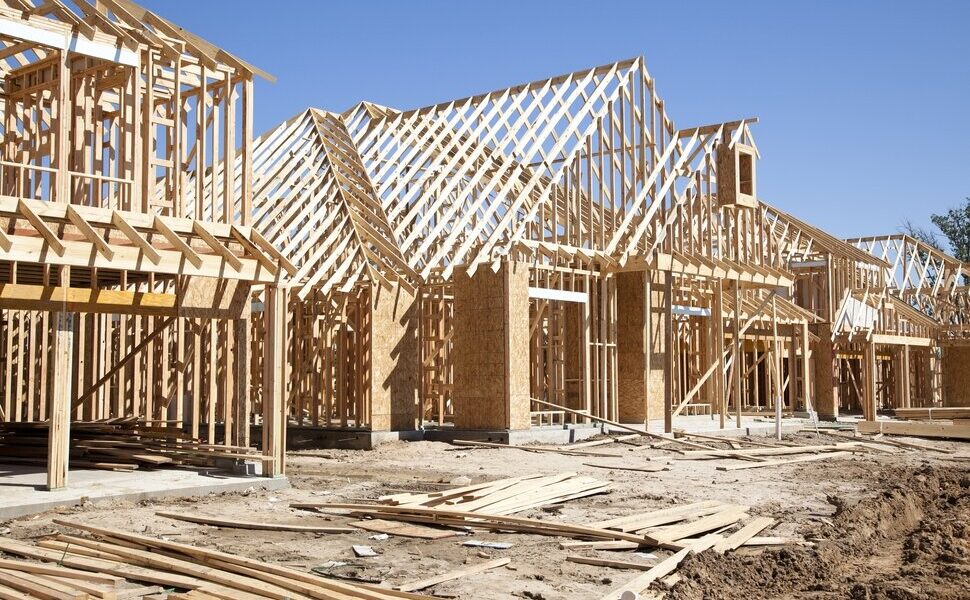What to Expect From the Housing Market This Summer
Here’s how rising interest rates, inflation and continued supply chain issues are affecting buying, selling and renting in the real estate market in the rest of 2022.
You may be in the market to buy a house, know someone who recently purchased or are waiting for the right time to start looking, but you’re likely aware that the real estate market is tough right now. In Gallup’s annual Economy and Personal Finance Poll, conducted in April and published in early May, 69% of respondents said now is a bad time to buy a house – the first time a majority of Americans have felt that way in the poll’s 44-year history.
There are certainly factors contributing to the majority sentiment – few homes on the market, rising interest rates and new housing construction that isn’t able to have a significant impact on demand. But that doesn’t necessarily mean it’s a bad time to buy for everyone, and it doesn’t mean it’s a bad time to be a homeowner. In fact, current conditions may mean current homeowners are in a position to sit comfortably.
Here are a few housing market trends shaping up this summer and in the latter half of 2022:
- Rising interest rates make buying a home more expensive, and homeowners are disinclined to sell.
- The prime time for refinancing mortgages has passed.
- Affordability limits are also reaching the new construction market.
- Rents are still rising, but not necessarily as fast as the last year.
Experts are breaking down current conditions and predictions for buyers, sellers, new construction and renters for the rest of 2022.
Buying
Despite mortgage interest rates remaining historically low over the past two years, homebuyers have struggled to be able to find houses on the market. “The inventory is there, but it’s just a matter of it’s flying off the shelves in a matter of days,” says Nick Bailey, CEO of Re/Max.
When buyers are able to make an offer on a home, fierce competition among buyers has driven prices up, and the beginning of 2022 saw that trend continue. The Federal Reserve Bank of St. Louis reports the median home sale price for the first quarter of 2022 was $428,700, nearly 19% above the median sale price for the first quarter of 2021, which was $369,800.
Since the end of 2021, mortgage interest rates have also been on the rise after nearly two years near or below 3%. As of May 19, the average mortgage interest rate for a 30-year, fixed-rate mortgage was 5.25%, according to Freddie Mac. Rates are still low from a historical perspective, but much higher than recent memory.
With higher interest rates, the total cost of a home for buyers rises even beyond already sky-high prices. “If I were to go and buy a home, I have to pay more per month for it, and so there’s the affordability crunch,” says Mark Fleming, chief economist for First American Financial Corporation, which provides title insurance and risk solutions services for real estate transactions.
While that will likely mean some buyers will opt not to purchase a home this year, it means active buyers can worry less about bidding wars and dropping concessions in order to entice a seller.
“It’s going to cool the competitive landscape a bit, and prices are stabilizing,” Bailey says.
Selling
Stabilizing prices provide some relief to buyers, but that doesn’t mean sellers are losing out. Both Bailey and Fleming note that prices are likely to continue to rise in most markets, but at a slower pace than we’ve seen over the past two years.
The rate of home value appreciation over the past two years is unsustainable in the long-term – it’s simply been too high for buyers to be able to keep up much longer. Homeowners can be happy with what has happened though: Bailey points out that in most markets throughout the U.S., the average annual equity gain for homeowners is higher than average salary growth.
Even so, expect fewer homeowners to put their home on the market as interest rates remain high compared to recent years. Sellers, in most cases, will also need to purchase a new home to move into, and most don’t feel the need to trade their current low-rate mortgage for one that has a higher rate and doesn’t have the same equity.
Fleming describes the dilemma homeowners currently face as a rate lock-in effect: Homeowners have in previous years locked in a much lower interest rate, and so selling a home to buy a new one now costs extra money because interest rates have risen. “The rate lock-in effect creates a financial penalty to moving,” Fleming says.
Homeowners are also unlikely to refinance their mortgages in the near future, as there’s no incentive to refinance to what would likely be a higher interest rate than the rate obtained in the last two or three years.
Not all homeowners are capable of remaining in their home, however. Legal services company LegalShield uses its data collected from customers seeking legal help on various issues to measure financial activity in its Economic Stress Index. When it comes to foreclosures, the index rose in April for the fourth straight month.
However, at least part of that is still related to the catch-up from the foreclosure moratoriums put in place in 2020 during the first months of the COVID-19 pandemic. The federal moratorium ended in September 2021, and many local moratoriums have since ended as well.
Matt Layton, senior vice president of legal services for LegalShield, notes that the U.S. is still at “almost record lows for foreclosure rates” compared to the time prior to the pandemic. As affordability crunches continue to put financial pressure on people, “we think we’re going to continue seeing an increase in foreclosures,” Layton says.
New Construction and Development
Don’t expect new construction to have a big impact on demand this summer – or the rest of this year, for that matter. “They’re building houses at a pretty fair clip, the problem is they can’t get them finished,” Fleming says.
Continued supply chain issues in building materials and appliances mean home construction faces holdups in the process, and completion is delayed often.
Though homebuilder confidence started the year strong, it has since dropped, according to the Housing Market Index by the National Association of Home Builders and Wells Fargo, which asks builders across the U.S. how they feel about sales of new single-family houses currently, in the next six months and the traffic of prospective buyers. Preliminary numbers for May reveal builders feel the least confident about the traffic of prospective buyers, which is rated at 52 out of 100, while confidence for single-family sales in the present is at 78.
Similar feelings are reflected in the LegalShield Economic Stress Index, which shows movement for construction dropping over the last year. Layton connects the drop in buyer activity for a new home with the decreased affordability, caused by rising interest rates, rising prices and potentially higher costs of building materials.
“We are beginning to see the consumer pull back and say, ‘I’m not going to buy that house right now,’” Layton says.
Renting
Like home prices in the last year, rents have also climbed rapidly in much of the U.S. Rental information company Zumper reports in its May National Rent Index that rents, on a national scale, hit an all-time high in May, with one-bedroom apartments up 12.8% year over year and two-bedroom apartments up 13.9% year over year. However, the month-over-month growth, at just 0.3% for a one-bedroom and 0.7% for a two-bedroom, could be a sign of softening.
“With home sales starting to slow thanks to rising interest rates and increasing inventory, May’s slightly cooler rent increases could foreshadow a less frantic rental market,” said Jeff Andrews, senior economic analyst for Zumper, in a press release.
Though, the report notes that rents aren’t expecting to see any significant decline – and while home prices have reached an affordability wall, rents in many markets still have a ways to go before reaching the same point.
Rent is one of those areas that often impacts consumers early on, according to Layton. And as financial pressure mounts, higher rents could become a problem. “We’re beginning to see stress on the everyday consumer. We’re also beginning to see record high landlord-tenant intake,” Layton says.





